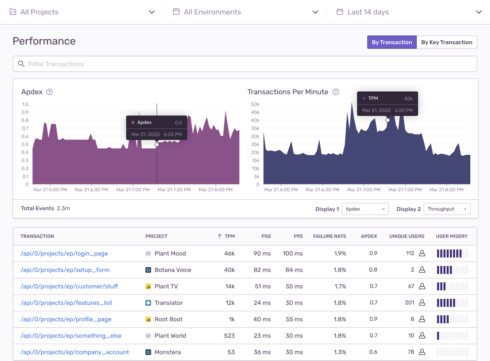
Sentry wants to give developers the ability to find and resolve performance issues with the introduction of agentless front-end performance monitoring for Python and JavaScript. According to the company, developers can trace performance issues to poor-performing APIs and other related errors in just a few lines of code.
“As more organizations go digital, it is important to know how your code is doing in production and not just if your systems are operational. Developers need a more direct line to the customer experience and related issues,” said Milin Desai, CEO, Sentry.
Sentry explained performance bottlenecks and coding errors result in slow search results, unresponsive services and unsatisfied customers. A recent report also found that 91% of organizations have lost out on revenue because of performance and availability issues.
The Sentry Performance solution includes:
- Application health insights that helps developers understand customer satisfaction through application response time, latency updates and throughput data. Additionally, users can compare response times, transactions and error rates to find and fix problems.
- Transaction summaries that provide data on transaction duration time, related code errors and customer impact. “With it, you can quickly see the number of affected users as well as the transaction’s impact on your response time. And by defining Key Transactions, your team can prioritize those critical functions and callbacks that need to be addressed immediately,” the company wrote in a blog post.
- Root cause analysis that shows the differences between outliers and normal performing transactions.
- Tracing that can reveal the exact database query that caused an error or performance issue. “Some error monitoring tools show you data from a frontend error. Only Performance can trace that frontend back to its API calls and slow database queries – all while surfacing related errors,” the company wrote.
- Performance alerts that show how crashes contribute to performance and provide updates if performance metrics fall past the predefined tolerance band.
Desai hopes by putting performance remediation in developers hands it can help reduce time to resolution, free up developer cycles and help customer satisfaction and retention.






